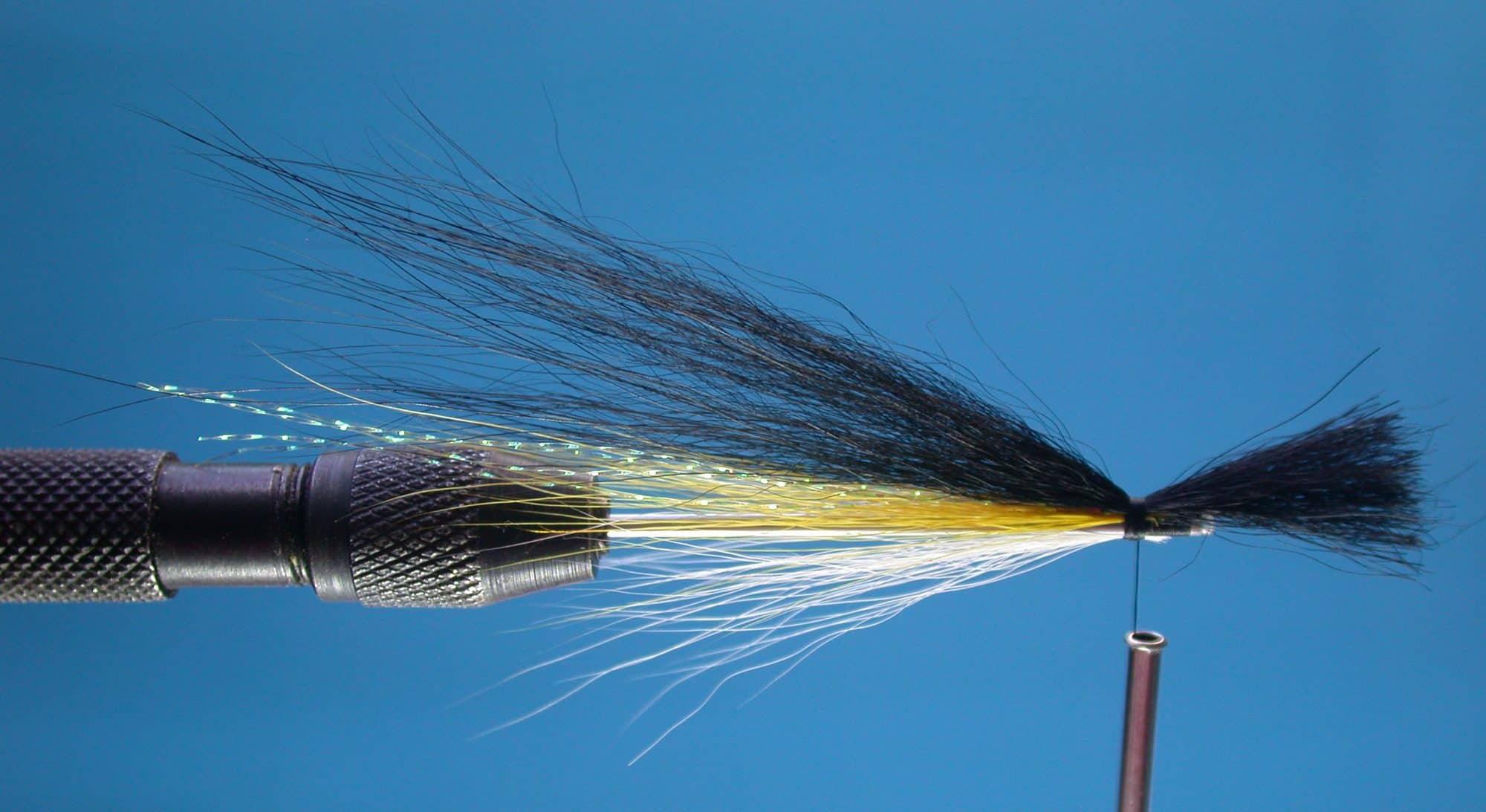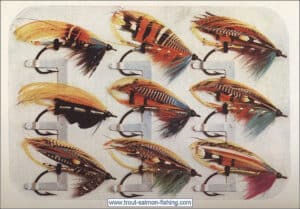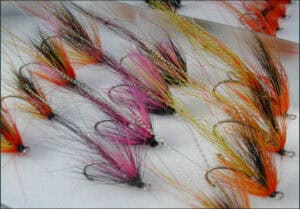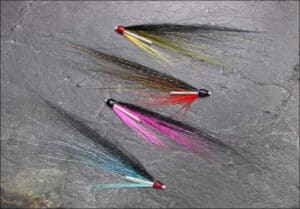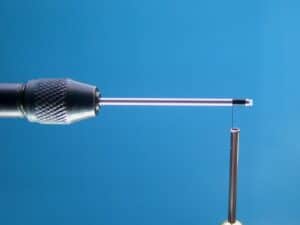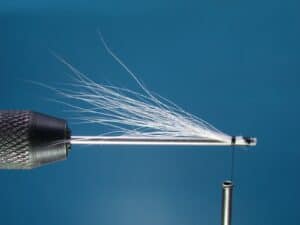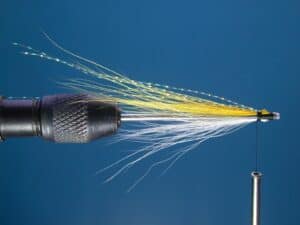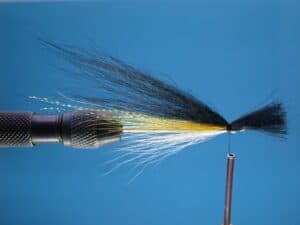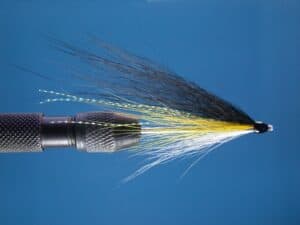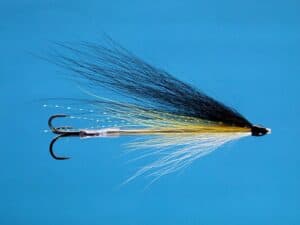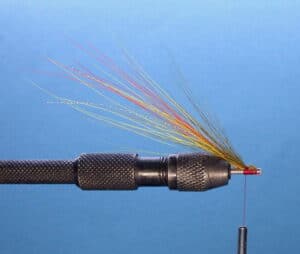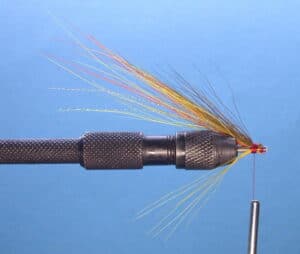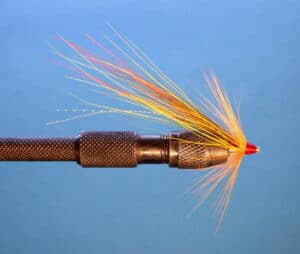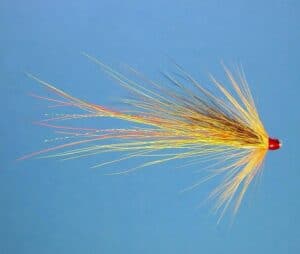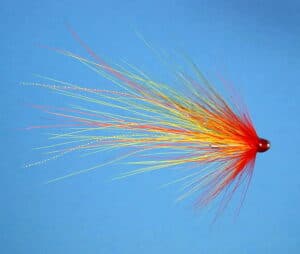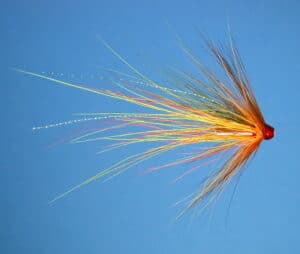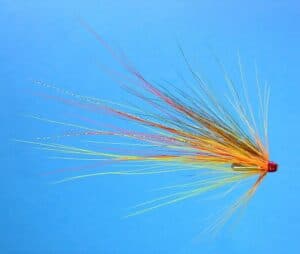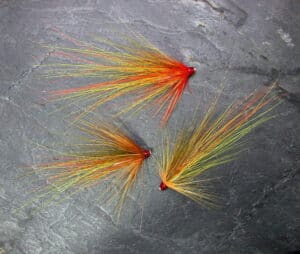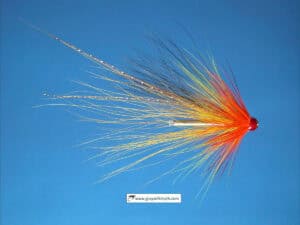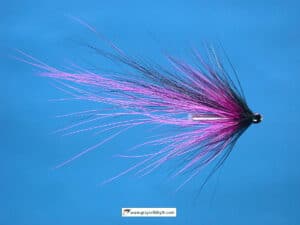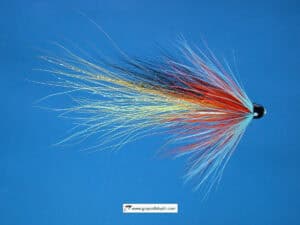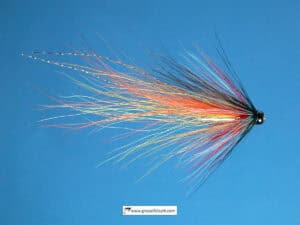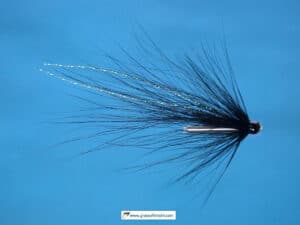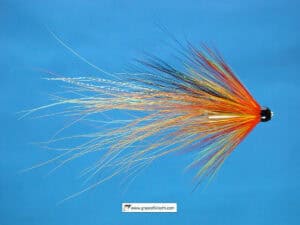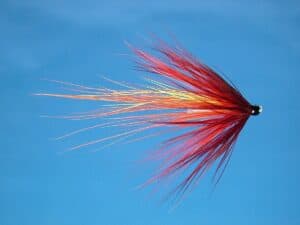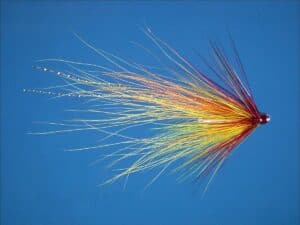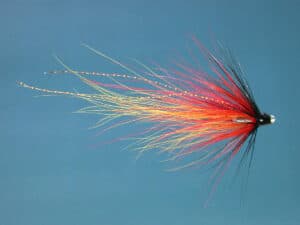Salmon Fly Tying
The history of salmon fly tying over the past two centuries demonstrates ever changing ideas, approaches and emphasis – from the early fairly simple and drab creations of Scrope, through the gaudy exotic Victorian era to more recent times, which have seen a whole range of new styles in fly tying, often with a high degree of technological input, not only in the make-up of the flies themselves but also in the means of presentation, incorporating a comprehensive range of fly line profiles and densities designed to be cast on increasingly efficient rods, each intended for a specific method or style of fly fishing.
Salmon flies can now be created in virtually any size, shape, weight or colour the fisherman desires, making use of the wide range of hooks, tubes and materials now available to the fly tyer. He may choose from a wide variety of hooks, be they singles, doubles or trebles; barbed or barbless; fine or heavy wire; wide or narrow gape; long or short shank; straight or offset bend; bronzed, japanned, silver, gold or nickel plated. The choice can be bewildering. While the availability of the kind of natural fly tying materials, from exotic birds and animals, essential to the creation of earlier intricate fully-dressed salmon fly patterns, is now very much restricted, a whole mini industry has sprung up to supply the fly tyer with an endless variety of artificial materials and substitutes. Then we have the ever increasing number of manufacturers offering a range of tubes and tubing combinations in all shapes and sizes, made from tungsten, copper, brass, stainless steel, aluminium and various multi-coloured plastics in a range of diameters, complemented by additional components such as coneheads, turbo discs, coloured beads, weighted or unweighted, and many more, allowing the inventive fly tyer to create flies of varying weights, profiles and densities to suit conditions of water and weather throughout the year and match his own changing fancies, theories and moods.
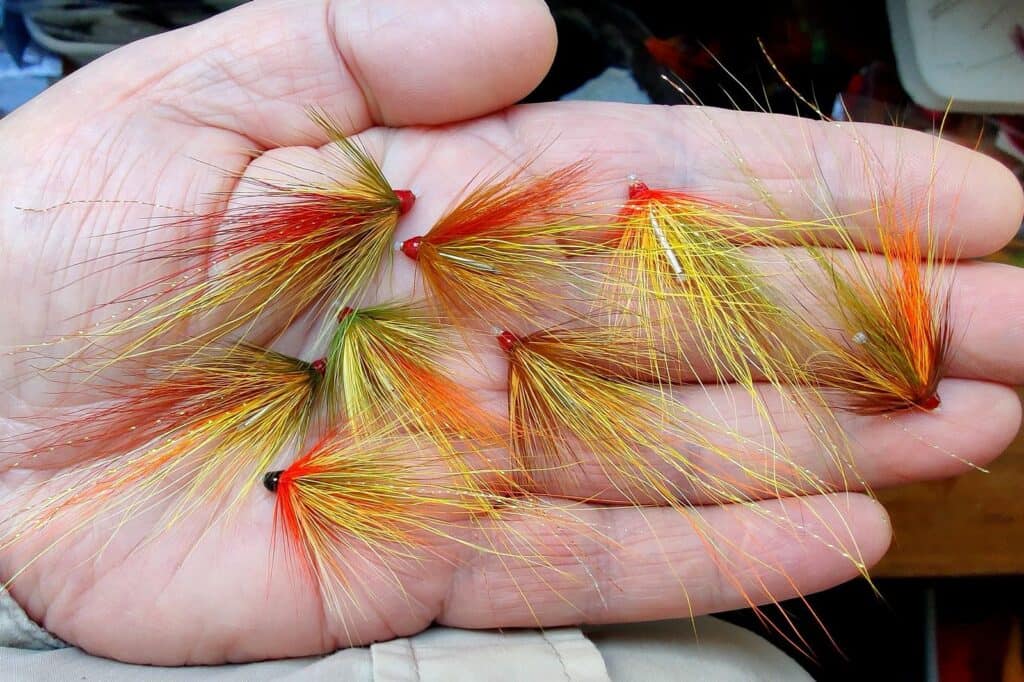
Salmon flies are, of course, tied to catch salmon but each fly tyer will have his own notion of what makes a successful fly. The experience of generations of salmon anglers provides a solid bank of reliable fly patterns, a great place to start. But half the fun in fly tying, which to many is a consuming hobby in its own right, is the creation of new patterns. In the search for that “killer” pattern, some will seek to create a close imitation of a particular prey such as shrimps, prawns or small fish. Others will take an impressionistic, rather than an imitative, approach, hoping to create an irresistible illusion to stimulate an instinctive reaction in the salmon. Equally important is the aesthetic appeal, to the fly tyer, of each of his creations. He must like the look of the fly, or he will have no confidence in it. Most successful flies will be a combination of all three. Whatever his rationale, each tyer must weigh up the relative importance of size, shape, weight, density, mobility, colour and contrast in each of his flies, always hoping to create that irresistible lure.
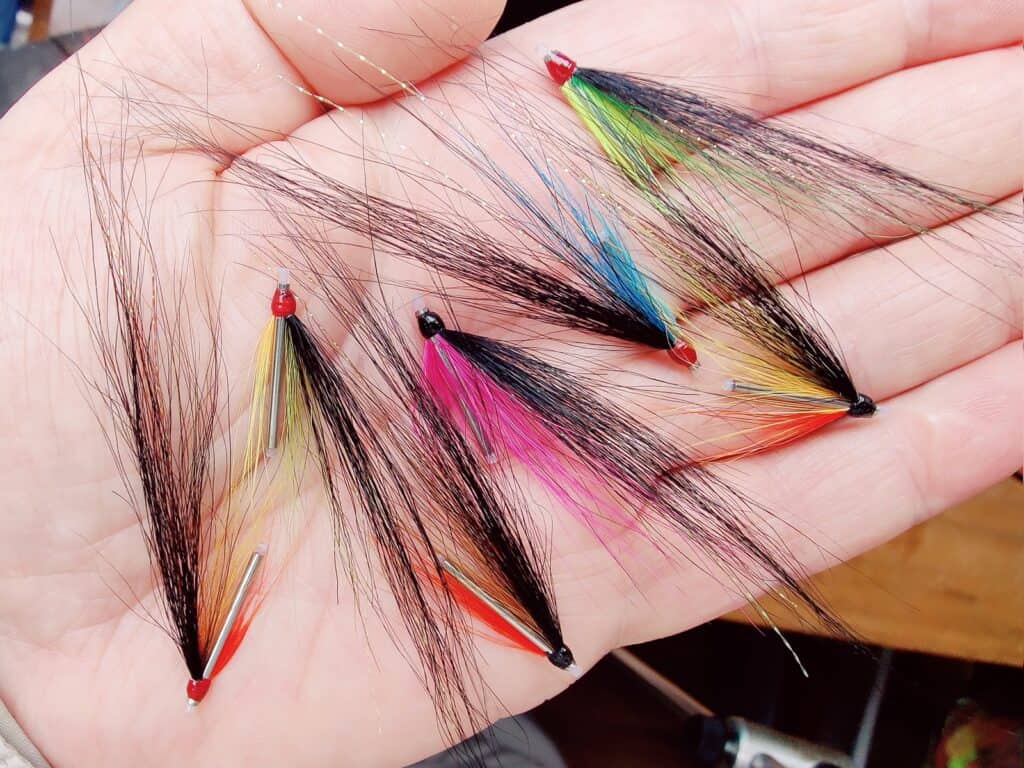
We may choose to tie our salmon flies on single, double of treble hooks, although increasing regulation has reduced the popularity of the latter. Or we might choose to tie on the increasingly wide range of tubes now available. We might seek to replicate the sometimes very complex patterns of the past or perhaps seek to simplify them or create new patterns in a modern style, whether that be a long-winged pattern in the Scandinavian style or a long-tailed shrimp pattern in the Scottish style, or perhaps an intruder pattern in the North American style.
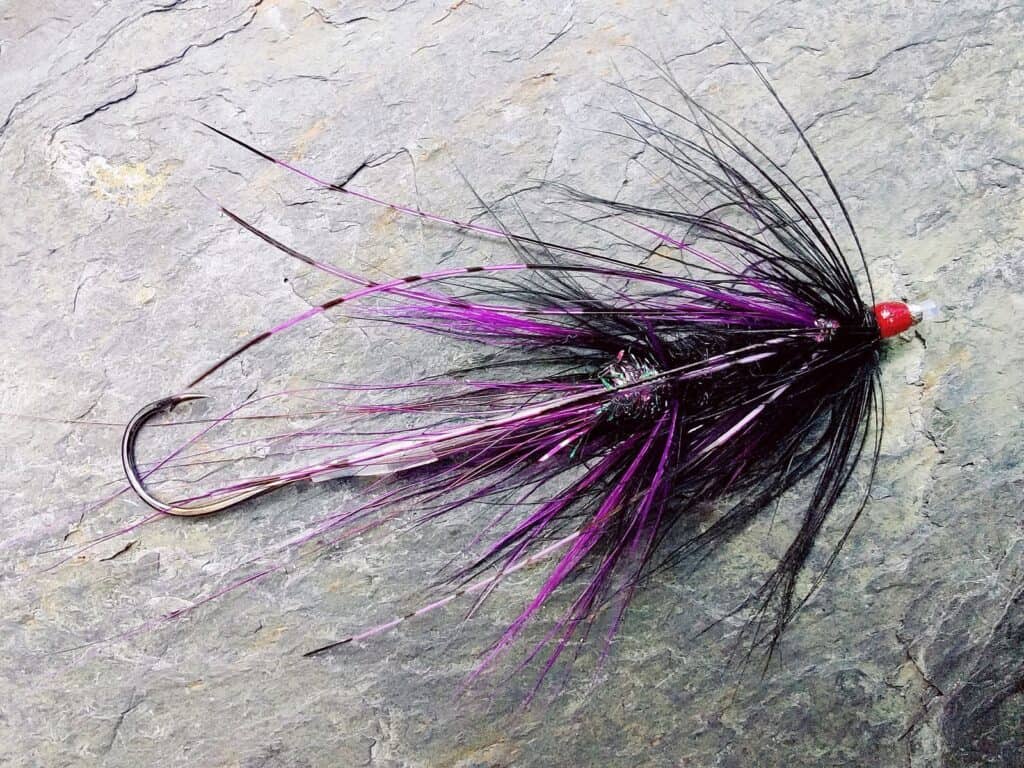
Or we might devise an entirely new style of our own. The possibilities are infinite. Furthermore, our flies can really be as simple or as complicated as we like. Complexity is by no means a guarantee of success. Indeed, I myself now lean towards the “less is more” idea. I have found, over the years, that the simplest of flies have caught me as many fish as the more complicated patterns. Most of the flies I tie now are very simple indeed, often dressed on stainless steel needle tubes, with no body at all, sometimes with little more than a sparse bunch of hair as a dressing. This is especially true of my sea trout lures for night fishing, as illustrated below, but my salmon flies are generally equally simply dressed.
Tying a Simple Needle Tube Fly
Illustrated below is a step-by-step sequence of the simple hairwing dressing of a needle tube fly for salmon or sea trout fishing. This particular fly was dressed for sea trout night fishing on the River Spey. It also accounted for an eight pound Spey salmon from Dulnain Mouth at midnight one night towards the end of May. Colours may of course be varied according to taste. A similar dressing may also be applied to a much shorter tube to create a different style of fly.
For sea trout night fishing, colour is of little importance, except perhaps to provide a bit of tonal contrast, e.g. a light shade of hackle combined with a dark wing. I like my sea trout flies to be tied slim and sparse and very simply, such as those shown below.
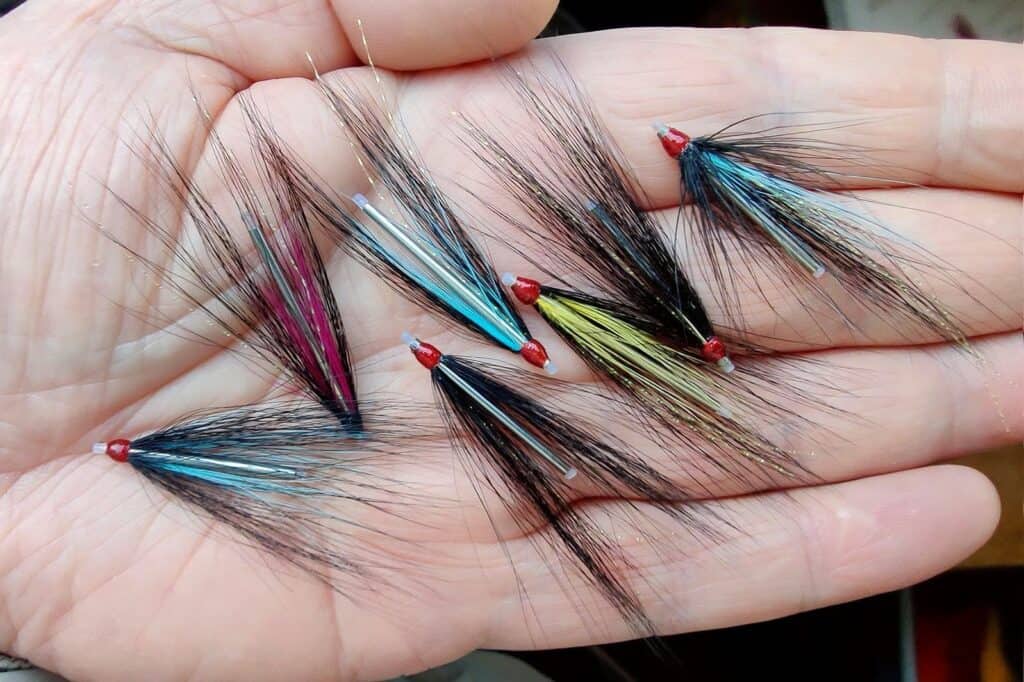
Tying a Scottish Shrimp Needle Tube Fly
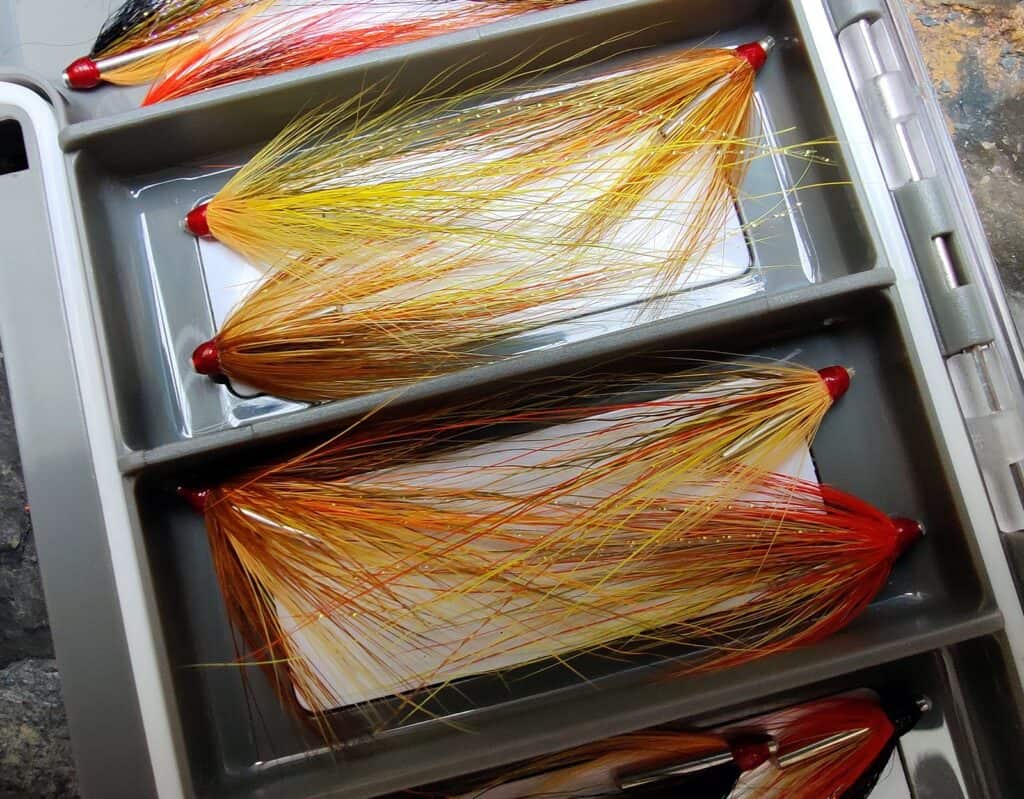
Illustrated below is a step-by-step tying sequence of a Scottish Shrimp Needle Tube Fly. This is another style of tube fly, which might be described as a long tail shrimp in the Scottish style (as in Ally Gowans’s Cascade). The dressing of the tube is much simplified by the omission of any body dressing, leaving the bare silver body of the tube, in this case a Needle Tube, length 10mm, diameter 1.5mm.
The Scottish Shrimp Tube Fly is a very simple style of dressing, incorporating four simple elements:
- a short sparse underbelly
- a long tail of single colour or mixed bucktail (Flash is optional)
- a short wing (2/3 the length of the tail) of bucktail, usually a darker colour than the tail
- a collar hackle, which may be a single colour, or a second hackle of a different colour may be added in front
The component colours may be varied to taste. The sequence below shows the tying of a Yelly Belly Scottish Shrimp Needle Tube Fly.
See also Tying A Cascade Needle Tube Fly
Some other examples of Scottish Shrimp Needle Tube Flies
Please explore the links in the menu at the top of this page for more information on salmon, sea trout and steelhead flies, tube flies and tube fly tying, with particular reference to tying a wide range of fishing flies for a variety of game fish on slim stainless steel Needle Tubes available online from Grays of Kilsyth
